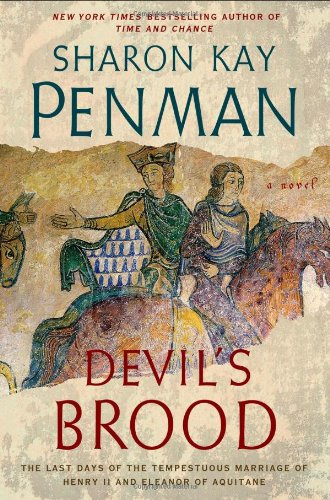Devil’s Brood
With her customary skill in depicting the personalities of medieval England’s most famously dysfunctional family, Penman delineates the last eighteen years of Henry II’s reign. Most of the action takes place in his French holdings, with less time spent in England proper. It opens in 1171, as the king weighs his responsibility in the death of his once-good friend, Thomas Becket. Though acutely attuned to political matters, Henry proves to be blind when it comes to those closest to him. Eleanor, his redoubtable queen, takes offense at his refusal to acknowledge her sovereignty in Aquitaine; their four sons, eager to assume power in their own right, join Eleanor in rebellion after Henry continues to clip their wings. As they battle both their father and one another, Henry struggles to hold onto his formerly thriving empire.
Several portrayals stand out, particularly those of people not often seen in fiction: Henry, the hot-headed Young King, who ultimately (and sadly) serves England best through his tragic early death; and Geoffrey, the third son, whose role as Duke of Brittany drives his changing loyalties. Richard, a soldier prince with a ruthless streak, remains faithful only to his mother, whose determination to preserve Aquitaine for his inheritance results in her long imprisonment. John, the youngest, remains an unknown quantity until the very end.
Most remarkably, in a book where dozens of characters share the stage, there are no true villains or flawless heroes. Though dense with detail in some sections, Devil’s Brood does an excellent job of rendering a complex series of historical events comprehensible. Those unfamiliar with Plantagenet history will probably want to read Time and Chance first, but this long-awaited volume delivers all you can expect from Penman: a story so immediate and real that you’ll feel like you’ve lived it.










